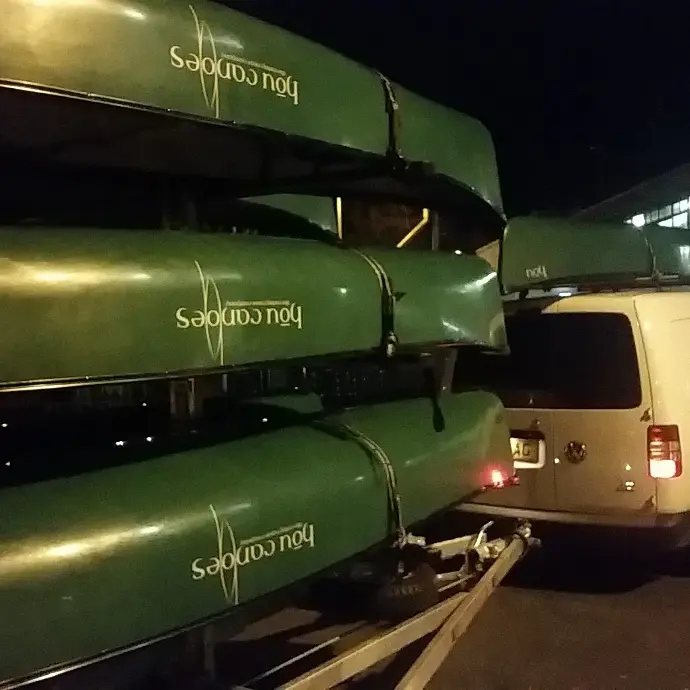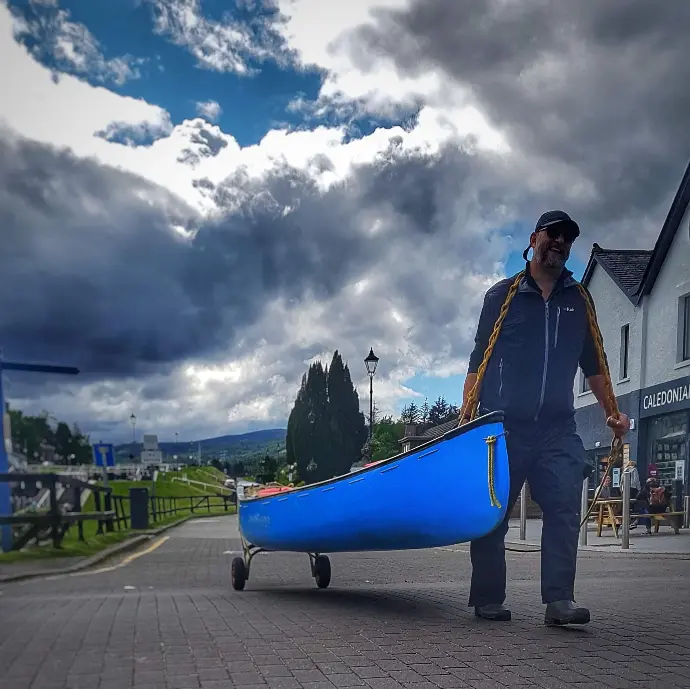Mastering the Art of Canoe Handling: Transporting, Portaging, Storing and Maintaining your canoe.
At Hou Canoes, we believe the journey is just as important as the paddle. Whether you’re exploring winding rivers or heading off the beaten path to reach that perfect wild camp spot, knowing how to handle your canoe on land is just as crucial as on water. Here's our guide to safely and efficiently portaging, transporting, storing and maintaining your canoe.
1. Portaging: Carrying Your Canoe with Confidence
Portaging—carrying your canoe overland between bodies of water—is an essential skill, especially when adventuring off-grid or getting the boat from the car to the water. With a well-balanced canoe like a Hou, it's more manageable than you'd think.
- The Solo Lift: Stand beside the canoe about a quarter of the way along its length facing the gunwale. Grip the near gunwale and lift the canoe onto your thighs. Then, grab the opposite gunwale and lift the canoe overhead, this should leave you with the up turned canoe above your head and you should be facing the far end of the canoe which will still be on the ground. Then shuffle your hands forward along each gunwale until you have positioned the yoke (centre bar) across your shoulders. The end of the canoe that was on the ground should now have lifted up and the canoe should be balance on your shoulders. You are ready to walk tall with the canoe firmly balanced on your shoulders.
- Double Carry: For heavier models or shorter distances, two paddlers can lift each end using the built in carry handles. Best practice is to stand on opposite sides of the canoe, this way it will carry level side to side and not dig into your legs like it would if you both carry on the same side. This is ideal for rocky or difficult terrain.
- Top Tip: Practice both methods on level ground before heading into the wild, and always clear your path before lifting.
- A great little video from our friends at PaddleMore showing the points above:
2. Transporting by Vehicle: Roof Rack Ready
Your canoe is designed to go where you go. To safely transport it by vehicle, follow these steps:
- Roof Rack Setup: Use strong, well-fitted roof bars. A foam pad or rubbers on the roof rack will help steady the boat. Canoes are best carried upside down resting on their gunwales.
- Strap It Down: Use cam straps (Roof rack straps, not ratchet straps, which can crush the hull) to secure the canoe to both roof rack bars. Cinch down snugly. If your roof bars are close together either move them further apart or tie the ends of the canoe to the towing eyes of your car, this is an additional way of stopping the canoe moving forward or backward whilst driving.
- Check Frequently: Give your setup a once-over at every stop. Wind resistance at motorway speeds can loosen even tight straps.
- Use the same principals for loading a canoe on a trailer.

3. Trolley Use: Saving Your Back and Time
A canoe trolley is a game-changer for longer land moves or solo trips.
- Choosing a Trolley: Look for a model with wide wheels if you’re crossing rough ground. Ensure the weight rating matches your canoe.
- Remember your canoe should not be heavily loaded whilst using a trolley. Putting a heavy load through one small area of the hull as it sits on the trolley can deform the canoes shape.
- Mounting the Canoe: Balance the canoe centrally on the trolley, ideally near the yoke for even weight distribution. Use bungee cords or straps to secure it.
- Towing Tip: You can pull the canoe with a waist strap or simply by hand—just mind your pace over rocky or sloped trails.

4. Storing Your Canoe: Protecting Your Investment
Proper storage keeps your canoe adventure-ready and in top shape for years.
- Indoors: The best option. Hang from slings under the gunwales (The canoe should be upside down as per transportation) or rest on padded racks. Avoid storing directly on the floor, especially on concrete as this can flat spot the hull over time.
- Outdoors: If inside isn’t possible, store it upside-down on sawhorses or racks, covered with a breathable tarp to keep the UV at bay. Keep it off the ground and shielded from sun and snow.
- Avoid: Prolonged exposure to UV, moisture build-up, and pressure points, which can warp or degrade materials over time.
Final Thoughts
Handling your canoe the right way makes every trip safer, easier and more enjoyable. Whether you’re portaging through the Highlands or strapping your canoe to the roof for a weekend escape, a little care goes a long way. At Hou Canoes, we build canoes meant for a lifetime of adventure—make sure you treat yours like the trusted companion it is.
Happy paddling!
— The Hou Canoes Team


How to; Transport, Portage, Store and Maintain your canoe.